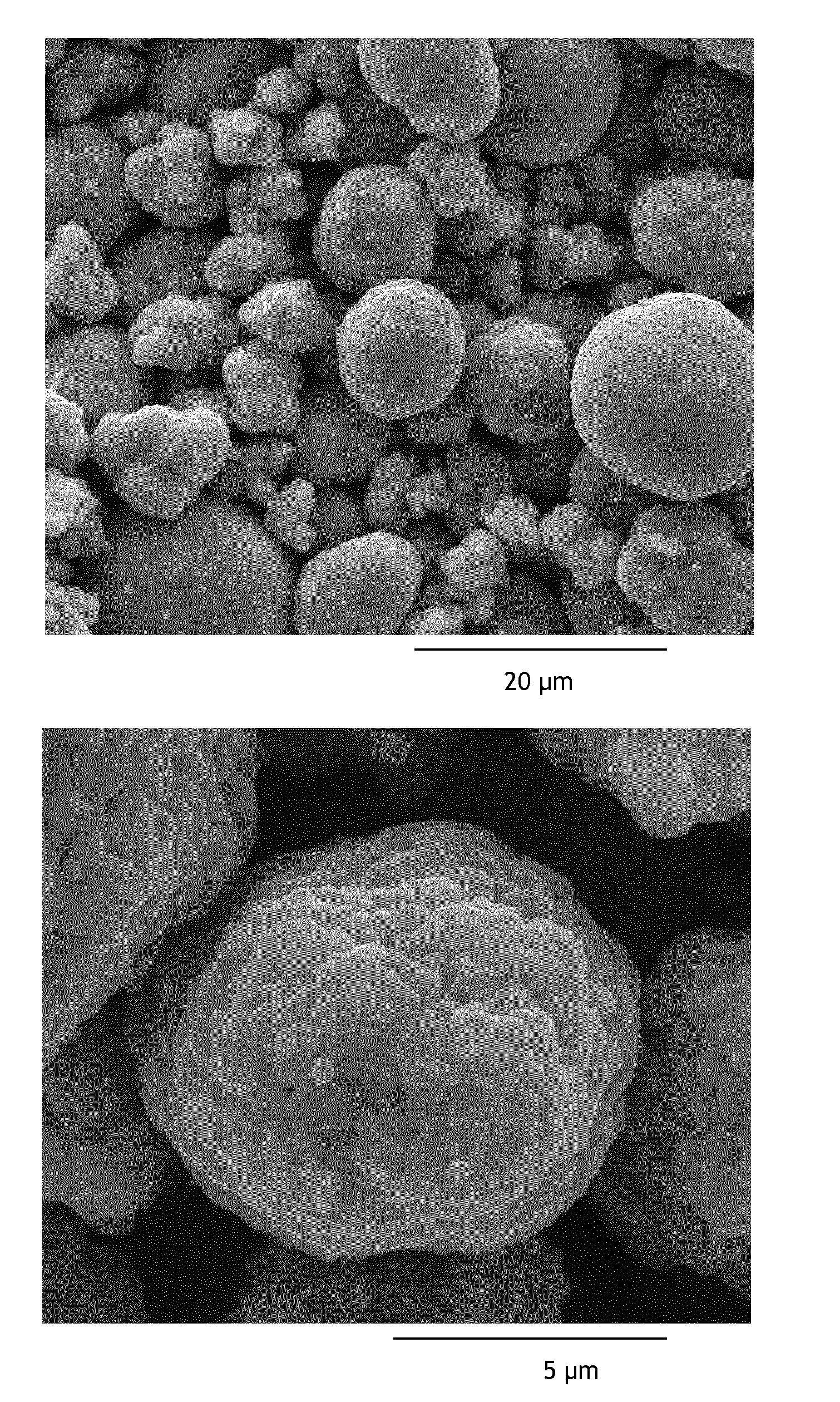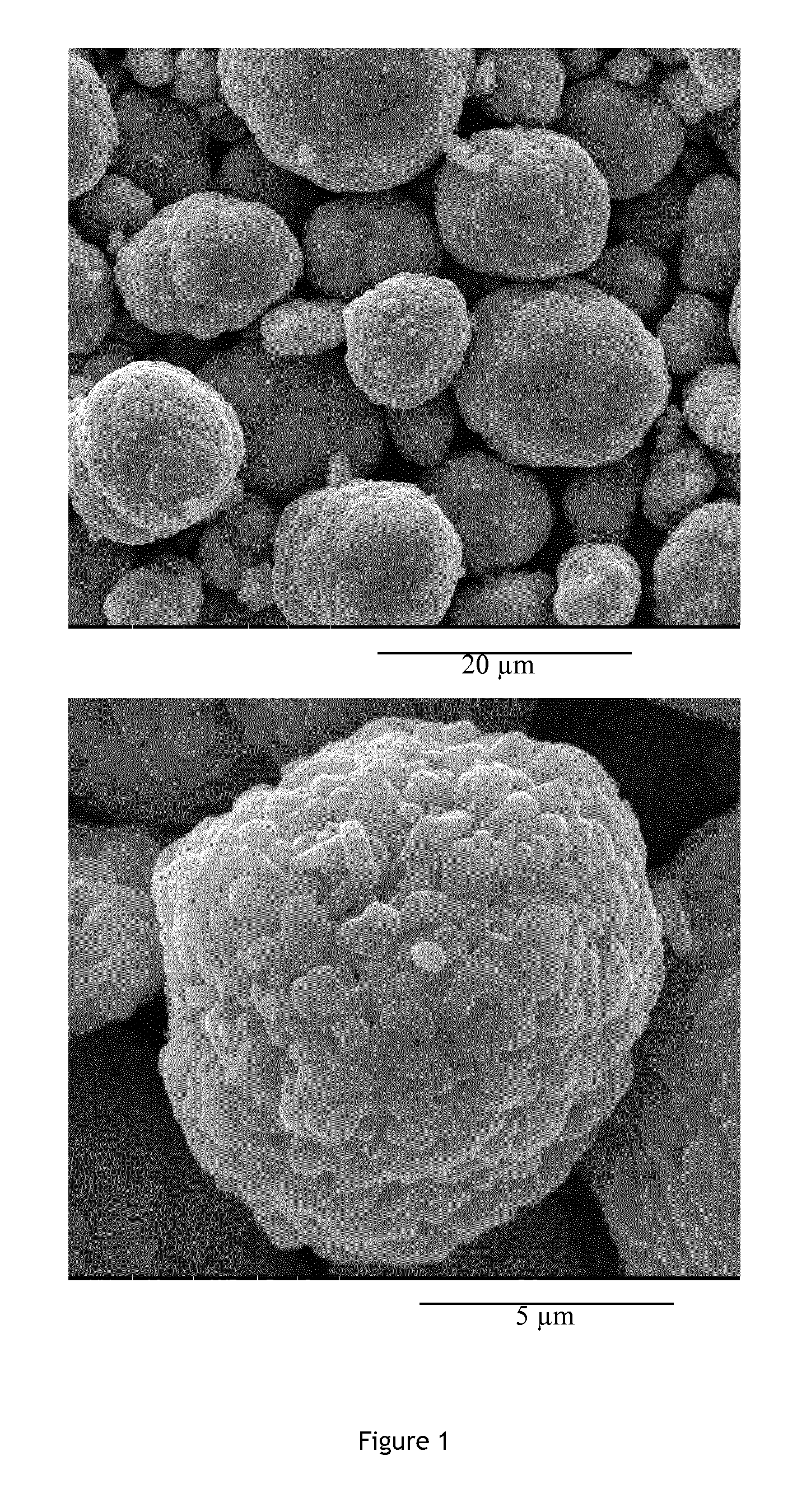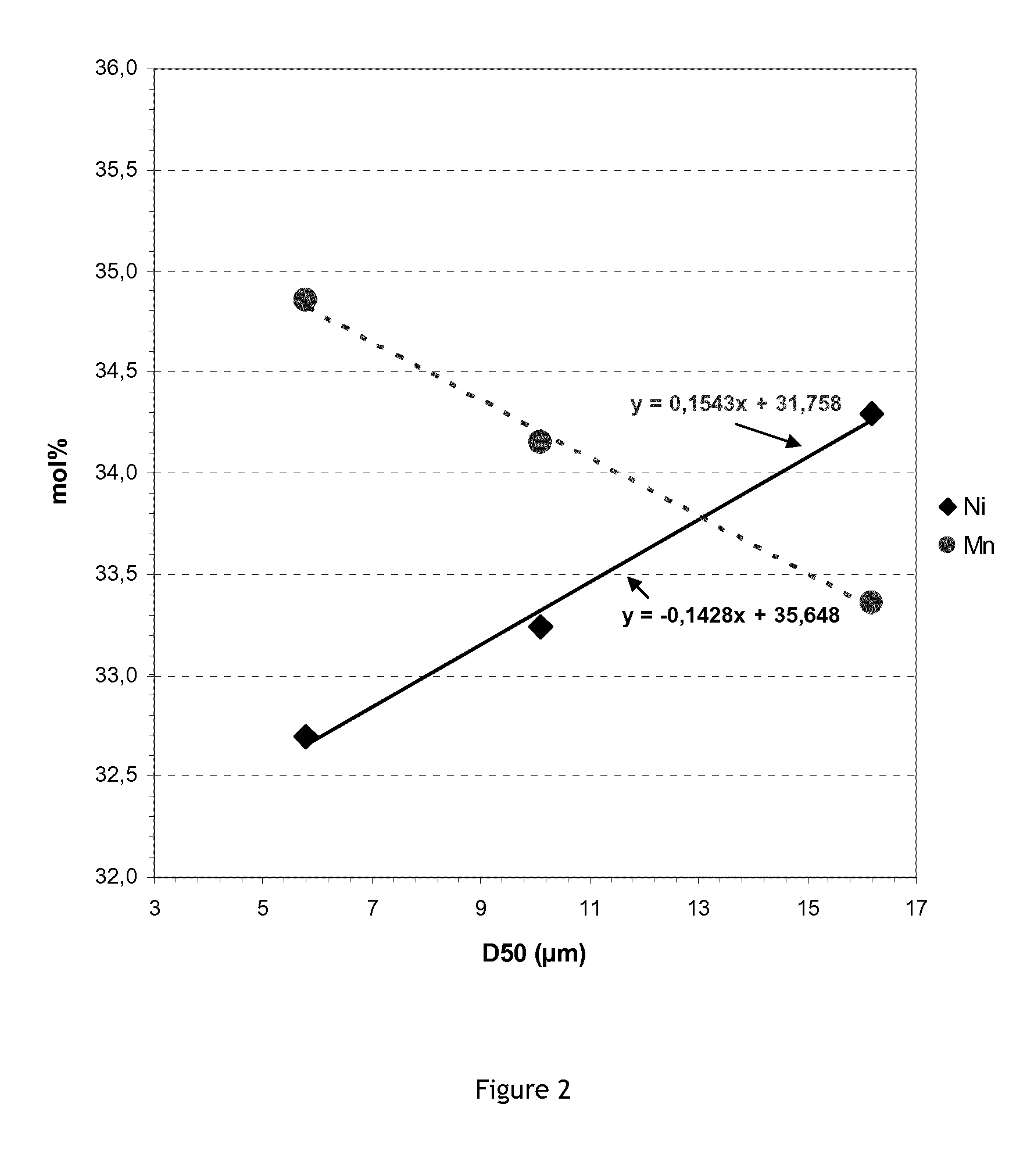Positive Electrode Material Having a Size Dependent Composition
a positive electrode material and composition technology, applied in the direction of cell components, electrochemical generators, nickel compounds, etc., can solve the problems of increasing discharge capacity, increasing thermal stability, and high cost of licoosub>2/sub>-based cathode materials,
- Summary
- Abstract
- Description
- Claims
- Application Information
AI Technical Summary
Benefits of technology
Problems solved by technology
Method used
Image
Examples
example 1
[0028]In a first step, a composite Ni—Mn—Co (or NMC) hydroxide precursor with molar composition 32.8:34.6:32.6 is precipitated from Ni, Mn and Co sulphates in the presence of NaOH and ammonia. The obtained NMC hydroxide has a spherical shape and the average particle size as measured from laser granulometry is centered around D50=6.5 μm (D10=4.1 μm, D90=10.2 μm).
[0029]In a second step, a NMC hydroxide precursor with molar composition 33.4:34.1:32.5 is precipitated from Ni, Mn and Co sulphates in the presence of NaOH and ammonia. The obtained NMC hydroxide shows spherical shape and the average particle size as measured from laser granulometry is centered around D50=10.5 μm (D10=7.5 μm, D90=14.7 μm).
[0030]In a third step, a NMC hydroxide precursor with molar composition 34.1:33.4:32.5 is precipitated from Ni, Mn and Co sulphates in the presence of NaOH and ammonia. The obtained NMC hydroxide shows spherical shape and the average particle size as measured from laser granulometry is cent...
example 2
Counter Example 2
[0045]In a first step, an NMC hydroxide material with molar composition 33.1:33.6:33.3 (without size dependent composition) is precipitated from Ni, Mn and Co sulphates in the presence of NaOH and Ammonia. The average particle size is measured from laser granulometry and shows a PSD with D10=5.1 μm, D50=9.1 μm, D90=16.4 μm. The above precursor without size dependent composition is used to prepare a series of lithium transition metal oxides at 3 different firing temperatures (see Table 3). As before, we chose a slightly Li rich composition (x=0.01 . . . 0.02) which is achieved by using a blend ratio (Li in Li2CO3 to M in M(OH)2 of 1.04) Table 3 summarizes the preparation. The mixed metal precursor and Li2CO3 are mixed in an appropriate ratio, followed by firing in air for 10 hours.
[0046]Sample MX0153 (fired at 950° C.) is further investigated by SEM (see FIG. 4), pH titration, and BET surface analysis. pH titration (using 7.5 g sample in 100 ml H2O, 10 min stirring, ...
PUM
 Login to View More
Login to View More Abstract
Description
Claims
Application Information
 Login to View More
Login to View More - R&D
- Intellectual Property
- Life Sciences
- Materials
- Tech Scout
- Unparalleled Data Quality
- Higher Quality Content
- 60% Fewer Hallucinations
Browse by: Latest US Patents, China's latest patents, Technical Efficacy Thesaurus, Application Domain, Technology Topic, Popular Technical Reports.
© 2025 PatSnap. All rights reserved.Legal|Privacy policy|Modern Slavery Act Transparency Statement|Sitemap|About US| Contact US: help@patsnap.com



